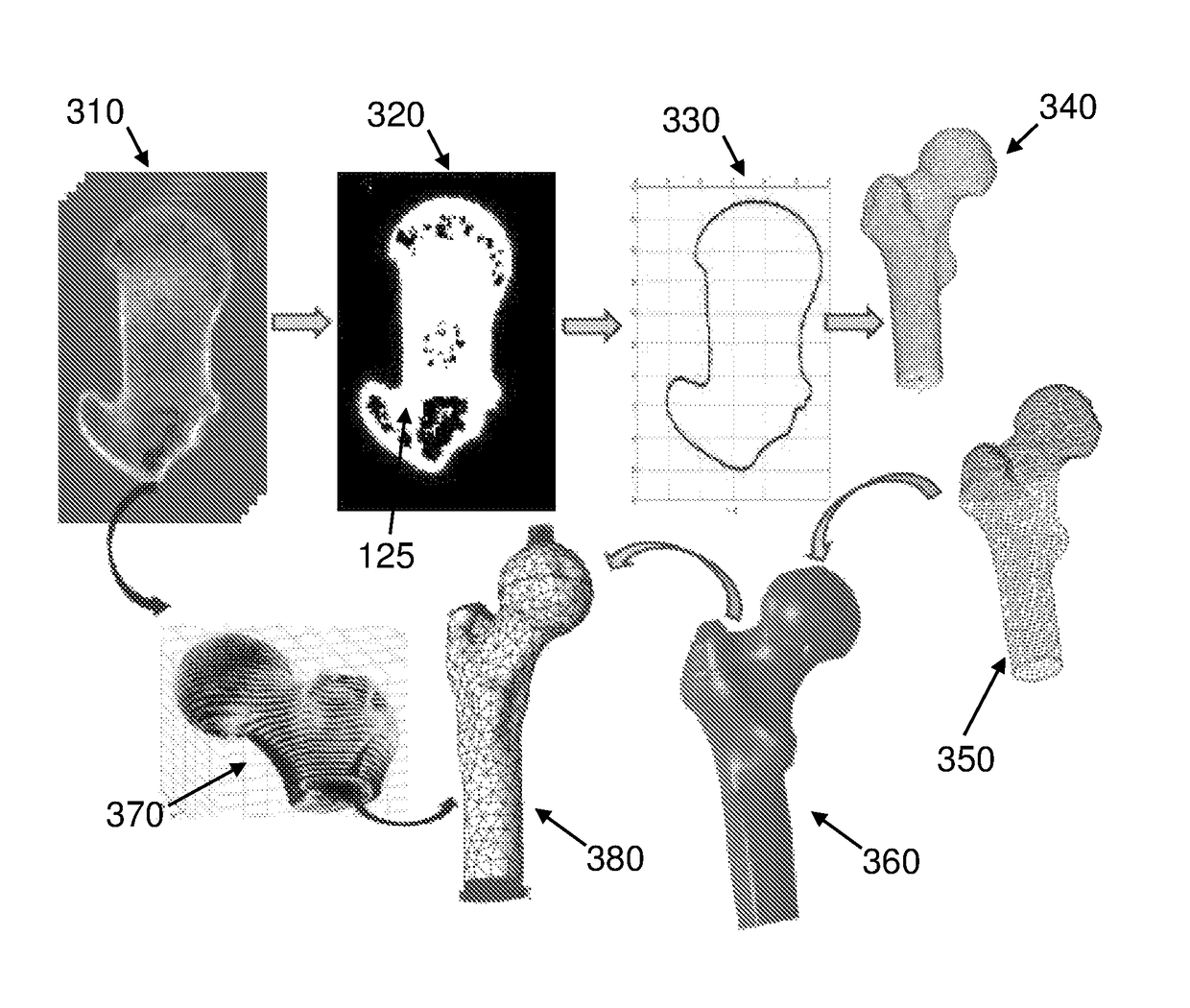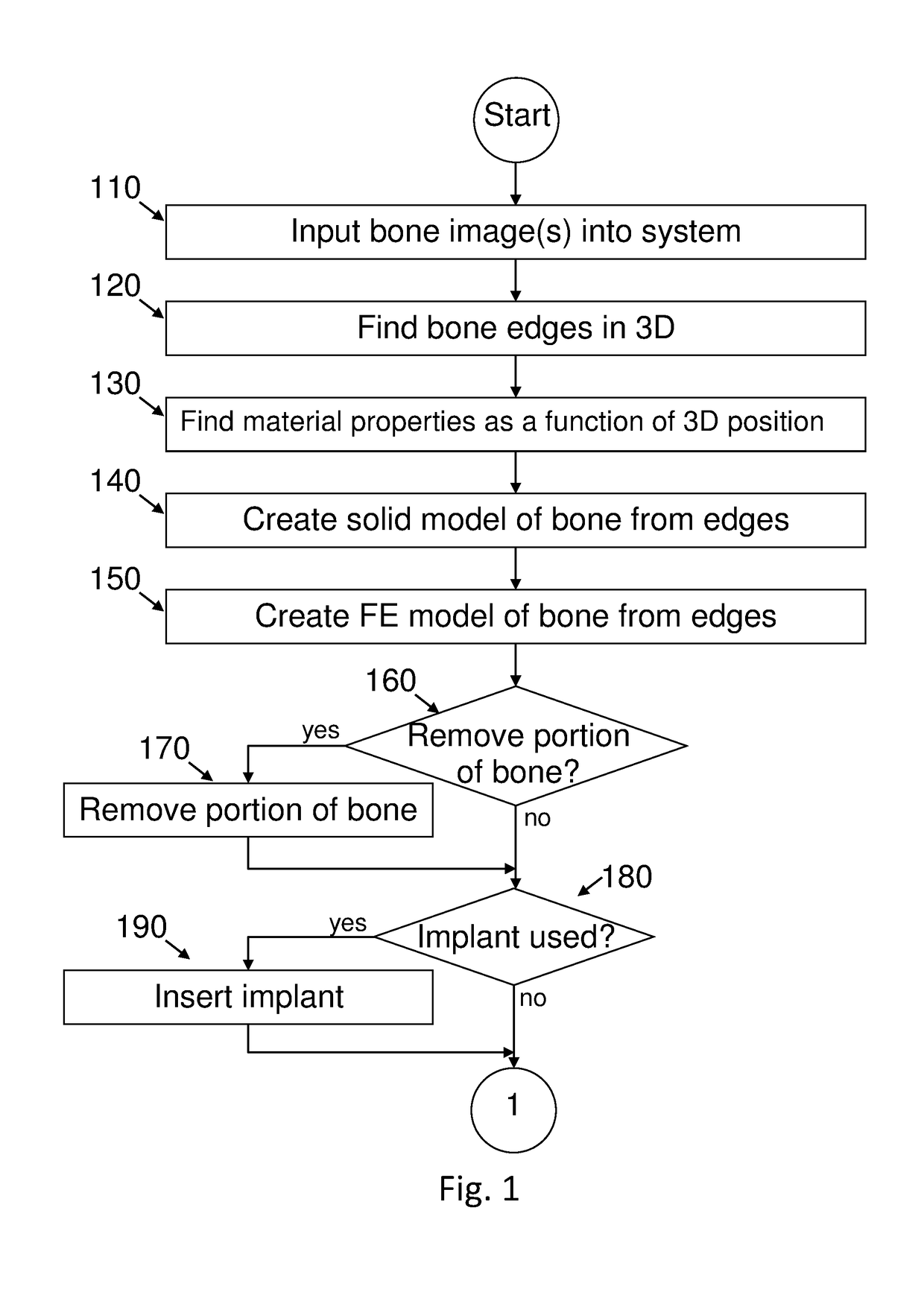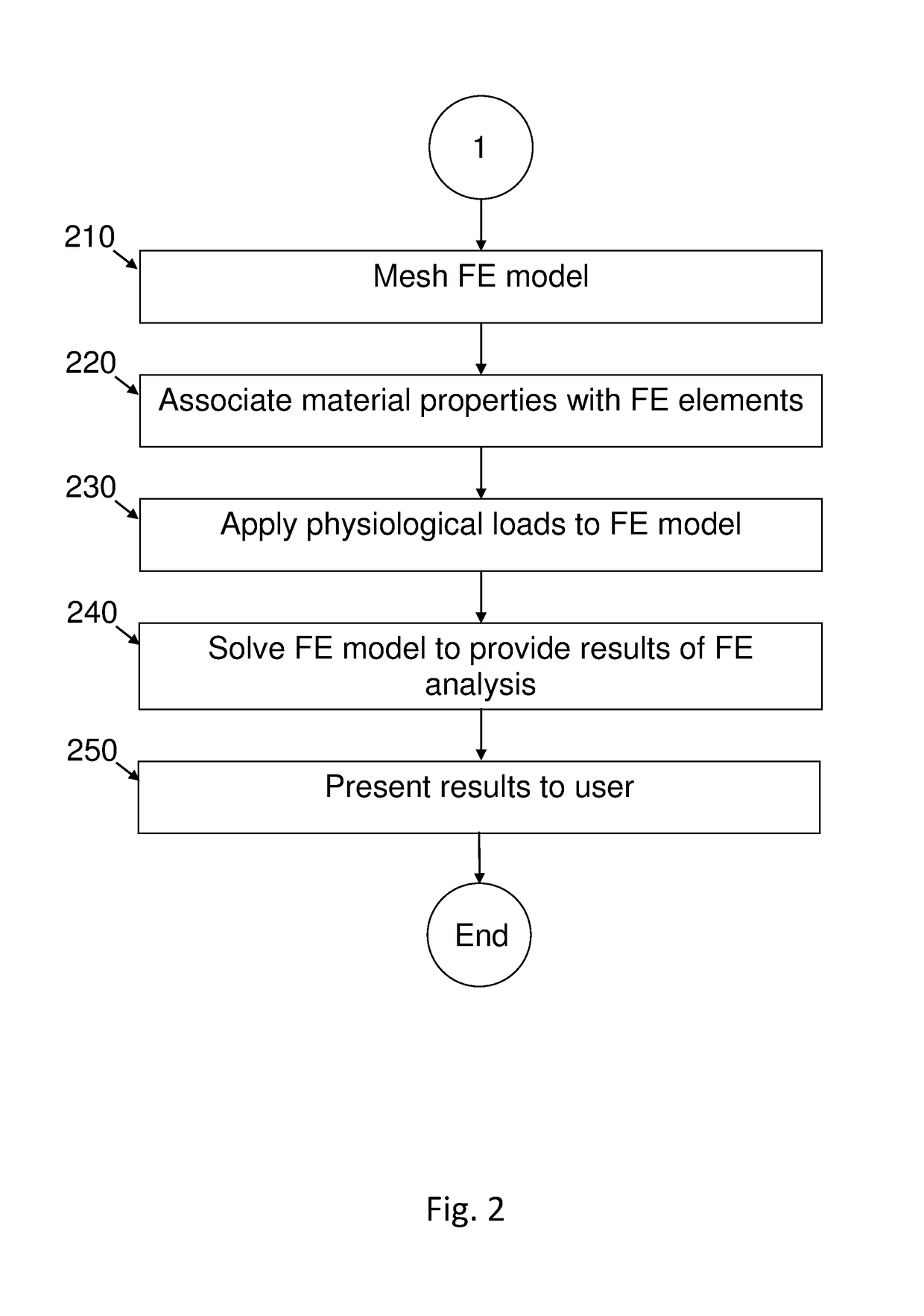Automated patient-specific method for biomechanical analysis of bone
a patient-specific method and bone technology, applied in image data processing, health-index calculation, medical simulation, etc., can solve the problems of bone or remaining bone being too weak to withstand these stresses, requiring too much fea expertise, and too time-consuming
- Summary
- Abstract
- Description
- Claims
- Application Information
AI Technical Summary
Benefits of technology
Problems solved by technology
Method used
Image
Examples
example 1
[0298]The methods were examined on different fresh frozen bones with different CT resolutions. To compare between both methods and to assure model's accuracy, several measurements were taken and compared to the geometrical model. The comparison of the outer contour dimensions generated from CT data and the real femur shows a maximum error of 2% (usually less than 1 mm which is in the range of the CT resolution and the measurements tool error).
example 2
[0299]Validation of the material properties was performed by applying a load of 1000 N to a section of a thawed fresh-frozen human femur. The femur was scanned by quantitative computed tomography (QCT) and thereafter loaded (in vitro experiments) by the quasi-static load. QCT scans were manipulated to generate a high-order FE bone model with distinct cortical and trabecular regions having inhomogeneous isotropic elastic properties with Young's modulus represented by continuous spatial functions. Sensitivity analyses were performed to quantify parameters that have the most influence on the mechanical response. FE results were compared to displacements and strains measured in the experiments.
[0300]After defrosting, soft tissue was removed from the bone and the bone was degreased with ethanol. The proximal femur was cut and fixed concentrically into a cylindrical sleeve by six bolts and a PMMA substrate and was scanned in two different environments. QCT scans were performed using a Phi...
PUM
 Login to View More
Login to View More Abstract
Description
Claims
Application Information
 Login to View More
Login to View More - R&D
- Intellectual Property
- Life Sciences
- Materials
- Tech Scout
- Unparalleled Data Quality
- Higher Quality Content
- 60% Fewer Hallucinations
Browse by: Latest US Patents, China's latest patents, Technical Efficacy Thesaurus, Application Domain, Technology Topic, Popular Technical Reports.
© 2025 PatSnap. All rights reserved.Legal|Privacy policy|Modern Slavery Act Transparency Statement|Sitemap|About US| Contact US: help@patsnap.com



